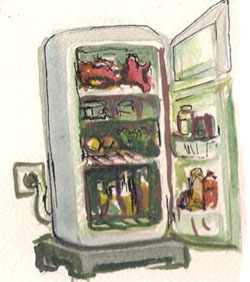42.2.1 Common source outbreaks
Common source outbreaks occur when the rise in cases of an infection occurs after a group of people all came into contact with the same unsafe source of infection (the common source), such as contaminated food or water. For example, imagine a wedding where food was prepared in the morning to serve to wedding guests in the evening. If the prepared food was left outside on a hot day under the sun until evening, bacteria might multiply in the food. If this food was served to the guests in the evening without reheating it thoroughly, many of the guests might fall ill from eating the contaminated food (Figure 42.1). This kind of epidemic is called a common source outbreak because the affected guests all ate the same contaminated food at the wedding.

After the food had been prepared in the morning, explain what should have been done to make it safe to serve to the wedding guests in the evening.
Bacteria like moisture and warmth, and they multiply quickly in food left in hot sun for many hours. After the food had been prepared, it should have been kept covered in a refrigerator (Figure 42.2) or in a cool place inside the house, away from direct sun. The food should also have been reheated thoroughly before being served to the guests.
 Figure 42.2 Refrigerating food reduces the risk of a common source outbreak of a foodborne infection.
Figure 42.2 Refrigerating food reduces the risk of a common source outbreak of a foodborne infection.
A point source outbreak is a common source outbreak where the exposure period (e.g. the time at which the contaminated food was eaten) is short. This means that all cases who fall ill after eating the food (the common source) also have the same incubation period, i.e. the period between infection (eating the contaminated food) and the appearance of the first symptoms.
42.2 Types of epidemics
